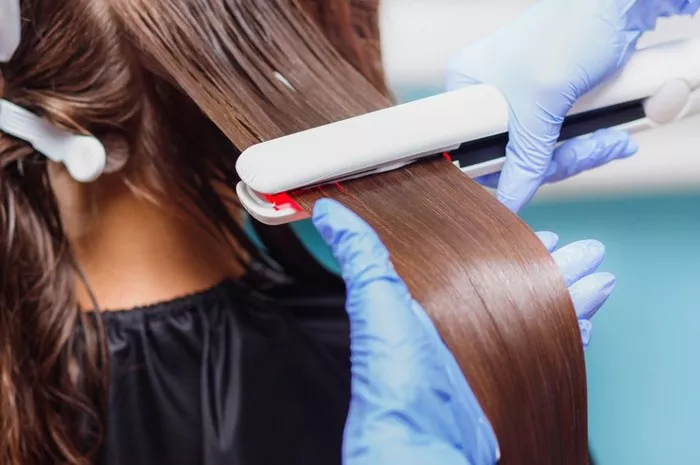As economic uncertainty continues to affect many households, the trend of “recession-proof hair” has gained attention, with consumers seeking cost-effective ways to maintain their hairstyles. For some, this means stretching the time between salon appointments, which hairstylists typically recommend every four to eight weeks depending on the complexity of the cut.
But what happens when a salon visit is simply not in the cards? Whether you’re in need of a trim before your next appointment or simply want to try a new style without the salon price tag, here’s what hair care experts advise before picking up the scissors.
How to Cut Your Own Hair
While hairstylists generally advise against cutting your own hair at home, they acknowledge that it can be done safely with a mindful approach. The technique can vary depending on your hair type and length.
According to Kevin Kelly, founder of Kevin Kelly Salon, the way your hair responds to cutting differs based on its texture. Straight, wavy, and curly hair each require different methods. Curly and wavy hair, for example, are often more forgiving if the cut isn’t perfectly even.
For those with long hair, both Kelly and fellow stylist Jewell Hingorani recommend starting by parting the hair at the back, then gathering it in front of the body. Depending on the length, you can either secure it with two pigtails or tie it into a single ponytail below the chin. Once the hair is gathered, you can begin trimming small sections, starting with a modest amount.
Hingorani advises cutting slowly, especially when working with wet hair. “Wet hair can appear longer, but it may shrink as it dries, so it’s important to start with small trims and gradually work your way up,” she explains. A half-inch is a safe starting point, with the option to trim more if needed. She also cautions those with curly hair to consider how much it may shrink post-cut.
What Not to Do When Cutting Your Own Hair
While the idea of a DIY haircut might seem appealing, professionals warn against getting overly ambitious. “It’s easy to end up with a cut that’s worse than what you started with,” Hingorani cautions. A common mistake is cutting too quickly or at the wrong angle, leading to uneven sections or unintentional layers.
Special care is needed when trimming bangs. Hingorani reminds at-home cutters to account for any cowlicks or natural whirls in the front hairline, as these can affect the final result and lead to shorter-than-expected bangs.
Kelly also advises against attempting complex styles, like the “butterfly haircut,” which involves gathering the hair in a ponytail at the top of the head. This technique often leads to unexpected results, particularly with the shorter layers at the front. He recommends a more cautious approach, emphasizing the “less is more” philosophy.
“You can always take off more, but you can’t put it back on,” Kelly notes, underscoring the importance of restraint when cutting at home.
Conclusion
While cutting your own hair at home may not replace professional styling, following these expert tips can help you maintain your hair between salon visits or experiment with a new look without the risk of costly mistakes. Just remember: patience and caution are key.
Relate topics:
- Amazon Shoppers Praise ‘Miracle’ Rosemary Oil for Hair Growth and Scalp Health
- Dermatologist-Backed Brand Seen Completes Nationwide Expansion with Ulta Beauty
- Experts Dispel Myths Linking Headgear to Hair Loss


